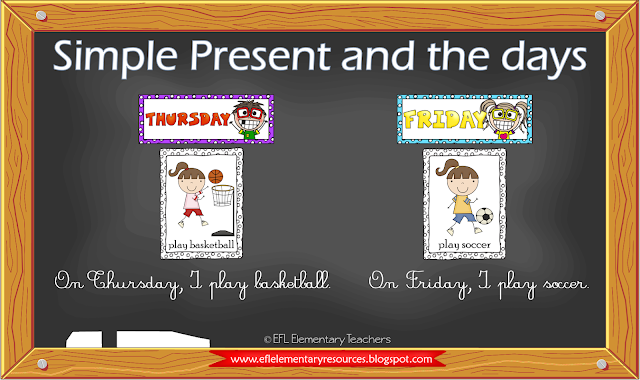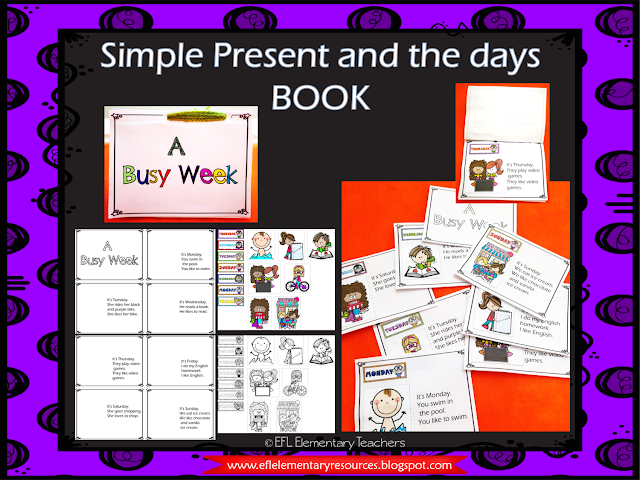Find the Simple present tense and days of the week resource here: https://www.teacherspayteachers.com/Product/Simple-Present-Tense-and-the-Days-of-the-Week-5573405 and save time by just printing and you are ready to go. This blog post provides suggestions to create effective learning of the unit.
Review the days of the week using the cards. They come in different size.
Use the flashcards
to introduce and practice the Grammar Tense.
Place the days of the week on the board. Introduce each verb flashcard and place it under a day of the week and say a sentence. Teacher: Tom cooks on Monday. Or Teacher: Tom cooks on Mondays.
I want to state that checking on several book series there are both
ways, use the one that suits your curriculum.
Write or circle the letter S of the verb. Write in a different color the word ON. Have the students try to say a sentence for each day of the week.
Introduce more grammar points using the cards.
I am making the cards a little smaller for you to use for distance
learning and on a small board. 
I glued a craft stick behind each one.
Simple present and the days of the week Worksheets!
They will become handy for fast finishers.
A printable book for Simple present and the days of the week
There is a small text on each page and there are pictures and days of the week to glue on the correct page. Take a look at the video.
Simple present tense Puzzle. Many students don’t even know how to relate with puzzle. This is
an opportunity to create some puzzles. I added a blank puzzle for students to
create their own puzzles to exchange with other students.
Follow me! Leave your comments !

















































